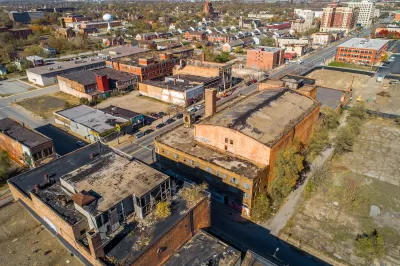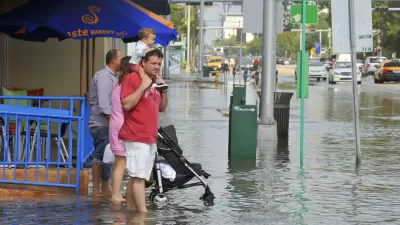Many small and mid-sized cities could see a decline before 2100.

An analysis of population trends in U.S. cities claims that as many as 15,000 urban centers could see dramatic population declines by the end of the century. Rachel Nuwer outlines the study in Scientific American.
The researchers began with a project for the Illinois Department of Transportation to assess “how Illinois’s cities are projected to change over time and what the transportation challenges will be for places that are depopulating,” later realizing that the same type of analysis could be expanded to other cities.
“The authors’ resulting projections indicated that around half of cities in the U.S., including Cleveland, Ohio, Buffalo, N.Y., and Pittsburgh, Pa., are likely to experience depopulation of 12 to 23 percent by 2100. Some of those cities, including Louisville, Ky., New Haven, Conn., and Syracuse, N.Y., are not currently showing declines but are likely to in the future, according to the findings.”
The study can’t account for potential changes in the far future, but depopulation can impact how cities and regions plan and redesign public infrastructure to serve remaining residents. “The authors hope that their paper serves as a wake-up call to policy makers to begin moving away from growth-based planning and to start finding place-specific solutions for cities that are likely to depopulate in the years ahead.”
FULL STORY: Thousands of U.S. Cities Could Become Virtual Ghost Towns by 2100

Planetizen Federal Action Tracker
A weekly monitor of how Trump’s orders and actions are impacting planners and planning in America.

Canada vs. Kamala: Whose Liberal Housing Platform Comes Out on Top?
As Canada votes for a new Prime Minister, what can America learn from the leading liberal candidate of its neighbor to the north?

The Five Most-Changed American Cities
A ranking of population change, home values, and jobs highlights the nation’s most dynamic and most stagnant regions.

San Diego Adopts First Mobility Master Plan
The plan provides a comprehensive framework for making San Diego’s transportation network more multimodal, accessible, and sustainable.

Housing, Supportive Service Providers Brace for Federal Cuts
Organizations that provide housing assistance are tightening their purse strings and making plans for maintaining operations if federal funding dries up.

Op-Ed: Why an Effective Passenger Rail Network Needs Government Involvement
An outdated rail network that privileges freight won’t be fixed by privatizing Amtrak.
Urban Design for Planners 1: Software Tools
This six-course series explores essential urban design concepts using open source software and equips planners with the tools they need to participate fully in the urban design process.
Planning for Universal Design
Learn the tools for implementing Universal Design in planning regulations.
New York City School Construction Authority
Village of Glen Ellyn
Central Transportation Planning Staff/Boston Region MPO
Institute for Housing and Urban Development Studies (IHS)
City of Grandview
Harvard GSD Executive Education
Regional Transportation Commission of Southern Nevada
Toledo-Lucas County Plan Commissions




























